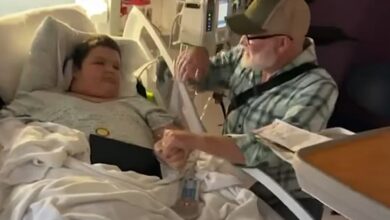Best hair loss treatments for men in 2025
Fear your hairline is pulling back? You’re far from alone.
Male hair loss is incredibly common, but it doesn’t come with a one-size-fits-all solution. The underlying cause, pattern, and severity can vary widely, so it’s reasonable to seek personalized men’s hair loss treatments.
🎬 Get Free Netflix Logins
Claim your free working Netflix accounts for streaming in HD! Limited slots available for active users only.
- No subscription required
- Works on mobile, PC & smart TV
- Updated login details daily
Today’s hair loss market is flooded with options, from over-the-counter pills and topical treatments promising quick results to high-tech laser devices, red light therapy helmets, as well as the rising trend of hair transplant surgery, which can cost over $15,000 and require up to two weeks of recovery.
Fortunately, many effective hair loss treatments can still offer real results without that hefty price tag. Brands like Ulo, Happy Head, and Nutrafol offer well-respected formulas with thousands of customer testimonials.
To get to the root of the issue and to identify the most effective treatment options for different kinds of hair loss, The Post consulted three dermatologists with years of experience treating male hair loss.
“A healthy scalp will shed between 50 to 150 strands of hair a day,” explained board-certified dermatologic surgeon, Nazanin Saedi, MD, FAAD. “Excessive shedding, more than 150 strands per day, is considered hair loss.”
Male androgenetic alopecia (MAA) is the most common form of hair loss in men, affecting up to 50% of men by age 50. However, hair loss can start at any age. Saedi explained that most men begin to notice hair loss in one of two areas: a receding hairline or thinning at the crown, which she describes as the early stages of a bald spot.
What causes hair thinning in men?
“Hair shedding and hair loss are complex,” Saedi said. “There are many potential causes, including genetics, stress, hormonal changes, tight hairstyles, vitamin deficiencies, sudden or severe illness, certain medications, and more.”
Due to these complexities, Saedi always recommends individuals consult their dermatologist or primary care physician to help pinpoint the underlying cause and decide on a course of treatment. The good news is that hair regrowth is possible. With numerous products and procedures available, the challenging part is finding one that works for your specific needs and regrowth goals.
Saedi, along with the experts we spoke to, shared several key ingredients to look for in effective hair loss treatments. They recommended plant or biotech-derived ingredients that boost follicle health, antioxidant-rich vitamins to reduce stress and support collagen, as well as popular treatments like FDA-approved minoxidil (Rogaine), which could stimulate new hair growth in certain cases.
Read below for some of the best hair loss treatments available, and jump to the FAQ section for more information on identifying and treating male hair loss.

Pros:
- Ulo matches patients with providers for discreet prescriptions and ongoing support through the hair regrowth process
- The prescription-strength topical combines finasteride with minoxidil to target the root cause of hair loss — for more visible results
- Supporting compounds like cetirizine, melatonin, caffeine, and retinoic acid enhance follicle stimulation and absorption
Cons:
- While once-a-day application still works, Ulo advises twice daily use for best results
Ulo delivers a full-spectrum approach to men’s health, and their hair regrowth system is no exception. The company matches patients with providers for ongoing support through the process, fine-tuning treatments and offering add-ons to cater to individuals’ needs. This prescription-strength topical is among their most powerful formulas, pairing proven ingredients like minoxidil and high-dose finasteride to target DHT — a hormone linked to hair thinning. More supporting compounds like cetirizine, melatonin, and caffeine enhance follicle stimulation, while retinoic acid boosts scalp absorption for maximum impact. It’s a multi-prong strategy designed for real, visible results in as little as three months.
Active Ingredients: Finasteride, minoxidil, cetirizine, melatonin, caffeine, and retinoic acid | Expected Results: results in 3-6 months, with further improvements up to 1-2 years with continued use

Pros:
- Vitamin D3 is said to play a role in the creation of new hair follicles, as well as the overall health of skin/hair
- Dutasteride is said to be more potent than finasteride — and more effective at blocking DHT
- The serving size is just one pill; no need to take multiple pills a day or apply messy foams, etc.
Cons:
- Unlike finasteride, dutasteride is not technically FDA-approved for hair loss
- Potential sexual and hormonal side effects should be considered
Similar to Ulo and Hims, Happy Head offers a personalized approach to treatment, with a free consultation with a board-certified dermatologist and customized prescriptions once you sign up. Happy Head’s oral solution is a best-seller. Instead of relying on finasteride, this formula combined minoxidil with dutasteride, which is said to be more potent and more effective at reducing DHT levels. Users also appreciate the inclusion of Vitamin D3, which plays a key role in the creation of new hair follicles and contributes to overall hair and scalp health. It’s important to note that dutasteride is not technically FDA-approved for hair loss, and potential sexual and hormonal side effects should be considered.
Active Ingredients: Finasteride, dutasteride, vitamin D3 | Expected Results: Results in 3 to 6 months

Pros:
- JSHealth combines iodine and zinc for thyroid support, metabolism, energy, and hair growth
- Potential benefits for skin and nails, as well as hair
- Convenient once-a-day capsule
Cons:
- It may be less effective than some other treatments that offer FDA-approved ingredients for hair loss
For everyday hair support and overall well-being, JSHealth’s Hair + Energy formula makes things simple. Just one capsule a day delivers a blend of iodine and zinc to nourish healthy hair growth, support your metabolism, thyroid, and energy — so you can feel good from the inside out. While this formula may not target the root causes of hair loss with FDA-approved ingredients, it still offers a wide range of benefits that could translate to stronger hair, skin, and nails. Some users have noticed results in as little as 4 weeks.
Active Ingredients: Zinc, iodine | Expected Results: Results may be seen in 4 to 8 weeks

Pros:
- The bioavailable ingredients are said to be absorbed more easily into the body
- Contains clinically tested ingredients that work to address multiple causes of male hair loss
- Completely drug-free treatment, which may reduce the likelihood of some side effects
Cons:
- Requires 4 capsules per serving
- Easy to go through the product fast, especially if using it every day
Nutrafol is one of the most well-known and respected hair loss treatments available, and the reviews are a testament to its efficacy. In a clinical study with men using Nutrafol’s Hair Growth Nutraceutical, about 72% reported improvements in scalp coverage after just 6 months of use. Almost 85% of users reported improved hair quality. Nutrafol’s patented technology may be the driving force behind these results, addressing multiple root causes of hair loss with bioavailable (easily absorbable) ingredients, including saw palmetto for hormone balance, ashwagandha for stress support, as well as several vitamins and antioxidants to help protect follicles from oxidative stress. Many users appreciate this multi-targeted, drug-free approach — even if it requires popping four pills at once.
Active Ingredients: Saw palmetto, ashwagandha, marine collagen, biotin | Expected Results: Clinically shown to promote visibly fuller, faster-growing hair in 3 to 6 months of consistent use

Pros:
- The key ingredient, minoxidil, is dermatologist-recommended and FDA-approved for hair loss
- The topical foam is unscented and very easy to apply daily
- Rogaine’s Tricho-Prime technology is supposed to help with absorption, while reducing dryness and irritation
Cons:
- Some reviewers experienced acne as a side effect
- Requires consistent use to see the best results
As far as topical treatments go, Rogaine is one of the most proven and popular options — up to 30,000 Amazon shoppers purchased a three-month supply in the last month alone. Minoxidil is the key ingredient in Rogaine, which is one of the few FDA-approved treatments for hair loss. It’s believed that minoxidil works by widening blood vessels and increasing blood flow to the hair follicles, which could support a longer growing phase. Rogaine’s Tricho-Prime technology was designed to help expand the skin to keep hair follicles open, while also preventing dryness and irritation. The foam is completely unscented and easy to apply, making it a great choice for anyone looking for a simple addition to their daily routine.
Active Ingredients: Minoxidil | Expected Results: Clinically proven to improve hair regrowth by 4 months

Pros:
- Better for the split ends or damaged hair, but hair oil may not target hormonal/genetic issues that could cause hair loss
- Budget-friendly, so appeals to a variety of shoppers
- Can help with texture and shine, per reviews
Cons:
- Some reviewers mention that the smell is pretty strong
- Must be used consistently to see results, based on our testing
Some men suffering from hair loss prefer to start with a gentler, natural formula. Certain hair oils can help nourish and stimulate the scalp, especially when they incorporate ingredients like rosemary oil, biotin, or castor oil. Mielle does all this and more, with a multi-prong formula that can help enhance hair strength and elasticity. It’s currently a #1 best-seller on Amazon, with thousands of rave reviews. This oil may not be the most effective hair loss treatment for men suffering from genetic or stress-related hair loss, but it is a well-reviewed, affordable option, and users say it brings a little more shine and texture to their locks, too.
Active Ingredients: Rosemary oil, castor oil, biotin | Expected Results: Up to 6 months

Pros:
- The spray is easy to apply, dries very quickly, and is a good alternative to pills
- The formula combines finasteride and minoxidil, which could be more effective than using either one alone
- Minoxidil concentration is a bit higher than some other topicals, which could make it more effective
Cons:
- Some users have experienced side effects like scalp irritation and dryness
- It can be difficult to target certain areas of the scalp
Hims offers a wide array of resources and customized treatment plans for men suffering from hair loss. One of the most popular options is a prescription-strength spray compounded with 0.3% finasteride and 6% minoxidil. The concentration of minoxidil is a bit higher than some other topicals, which could lead to improved results. Finasteride is also believed to lower dihydrotestosterone (DHT) levels, the hormone that is responsible for follicle miniaturization. The combination of these two ingredients together, is said to be more effective than using either one alone. While some users report scalp irritation or dryness, these mild side effects may be a reasonable trade-off for such a potent and targeted treatment.
Active Ingredients: Finasteride, minoxidil | Expected Results: Up to 4 months with consistent use
Best hair loss treatments for men FAQs
To uncover the most effective hair loss treatments for men, The Post consulted three dermatologists with years of experience diagnosing and treating hair loss.
What causes hair loss?
There is a combination of factors that can drive hair loss, per Kseniya Kobets, MD, Director of Cosmetic Dermatology at Montefiore Einstein Advanced Care.
“Hair loss can be a result of genetics, health, and environmental factors, ranging from insulin resistance, dietary issues (low nutrients), and vitamin deficiencies like vitamin D and iron, or protein,” she shared.
Kobets pointed out that the “craze” around certain GLP-1 medications has also been linked to hair loss in some cases. Inadequate nutrition can interfere with hair growth cycles and even weaken hair follicles.
“Stress can exacerbate the whole process by making you shed more and unmasking the underlying androgenetic alopecia,” she added.
What’s the difference between hair thinning and hair loss?
“Hair loss is when you see a lot of hair fallout, and that can occur when you are combing your hair, seeing it on your pillowcases, and when you run your hands through the hair,” explained Kobets. “This can be shedding from telogen effluvium, or the body’s response to a stressor.
“Hair thinning is more about a gradual decrease in hair density, which can result in fewer hairs but also thinner hair in terms of density. This is classically seen in androgenetic alopecia, with thinning of the scalp in specific areas like temples, crown of the head, and all over.”
What are the best ingredients to look for in a hair loss treatment?
Adisa has recommended a few different ingredients to look for in a hair loss treatment.
“Minoxidil, which increases blood flow to hair follicles, also prolongs the growth phase of the hair cycle,” she explained. “Also, finasteride, a DHT hormone blocker, prevents the hair follicles from shrinking. Saw palmetto is another botanical extract that can block DHT.”
Kobets has also recommended looking for treatments that incorporate peptides to help strengthen the hair strands, vitamin E can help reduce oxidative stress, and ashwagandha, which may help balance stress hormones.
What’s more effective — topical or oral treatments for hair loss?
“The most effective hair loss treatments depend on the type of hair loss being treated, and the individual being treated,” Adisa said. “In general, the FDA-approved treatments, minoxidil and finasteride, have shown great efficacy and consistent results in most individuals.”
How often should you use hair loss treatments?
Morayo Adisa, MD, FAAD, who currently serves as the Medical Director of Dermatology Physicians Chicago/Kenilworth, explained that for the best results, hair loss treatments should be used for the duration of the hair growth process.
She said this process can take anywhere from 6 months to a year. Adisa also stressed that it’s important to start treatment sooner, rather than later.
“There are treatments that can treat and slow down the progression of hair loss,” she explained. “However, early recognition and treatment are key because once there is complete baldness and loss of hair follicles, the treatment options are limited, if there are any at all.”
Are there any side effects associated with common hair loss treatments?
According to Adisa, there are some potential side effects for users to watch out for. Some of these side effects could include:
- Scalp irritation
- Dryness
- Itchiness
Other reactions could be more severe, depending on the individuals’ sensitivities.
“Topical and oral minoxidil could result in an increase in unwanted facial and body hair in addition to the initial temporary hair shedding,” Adisa added. “There have been rare reports of decreased libido, erectile dysfunction with Finasteride. Additionally, biotin can cause acne and interfere with certain blood tests.”
Adisa has suggested consulting a board-certified dermatologist to determine the best treatment options and to help manage any side effects.
This article was written by Miska Salemann, New York Post Commerce Writer/Reporter. As a health-forward member of Gen Z, Miska seeks out experts to weigh in on the benefits, safety and designs of both trending and tried-and-true fitness equipment, workout clothing, dietary supplements and more. Taking matters into her own hands, Miska intrepidly tests wellness products, ranging from Bryan Johnson’s Blueprint Longevity Mix to home gym elliptical machines to Jennifer Aniston’s favorite workout platform – often with her adorable one-year old daughter by her side. Before joining The Post, Miska covered lifestyle and consumer topics for the U.S. Sun and The Cannon Beach Gazette.
Credit to Nypost AND Peoples



